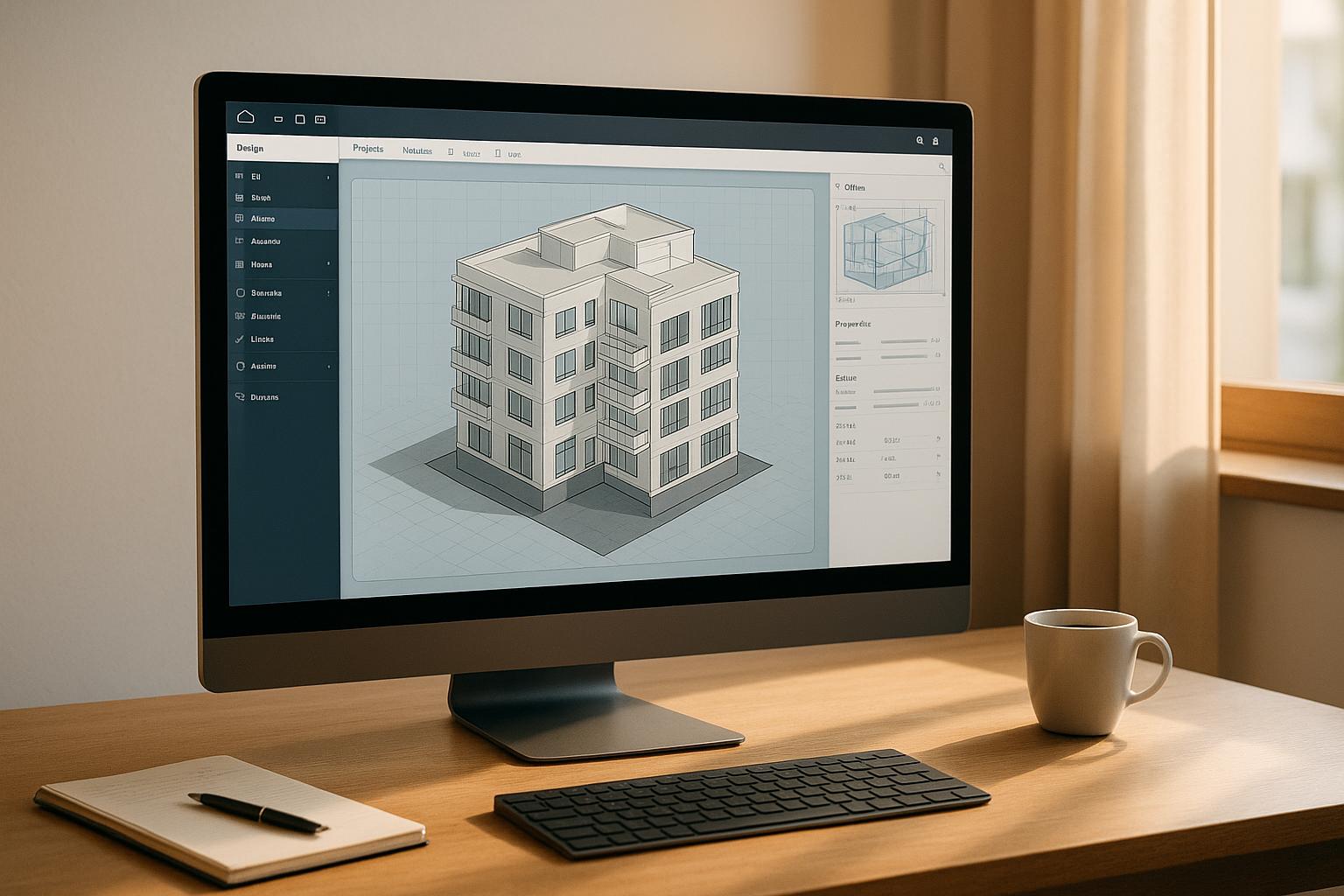AI and automation are making MVP (Minimum Viable Product) development faster, cheaper, and more efficient. Here’s how startups benefit:
- Faster Development: AI tools cut timelines from months to weeks.
- Lower Costs: Reduce expenses by up to 80% with automation.
- Smarter Decisions: Use data-driven insights instead of guesswork.
- Improved Testing: AI handles A/B testing, bug fixes, and updates faster.
- Better Market Research: Tools like NLP analyze trends and competitors in minutes.
Quick Comparison: Traditional vs. AI-Enhanced MVP Development
| Aspect | Traditional Approach | AI-Enhanced Approach |
|---|---|---|
| Development Time | Months of manual work | Weeks with automation |
| Cost Efficiency | High expenses | Up to 80% cost reduction |
| Testing & Iteration | Manual and slow | Automated and fast |
| Decision Making | Intuition-based | Data-driven insights |
| Resource Needs | Large teams | Smaller teams with AI |
AI tools like GitHub Copilot, Brandwatch, and predictive analytics platforms are helping startups launch MVPs faster, with better user engagement and market fit. Dive into the article to explore specific tools, strategies, and examples.
AI Tools for Market Research
Market Analysis with AI
AI is reshaping market research by using natural language processing (NLP) and machine learning to analyze massive datasets in just minutes – tasks that used to take weeks [3]. This speed allows startups to spot market trends, evaluate competitors, and find growth opportunities much faster.
Data shows that businesses using AI for market research see a 10–15% boost in productivity, along with sharper customer insights [2]. A great example is Airbnb, which used AI to better understand property demand and user preferences. This led to a 20% jump in booking rates [2].
Here’s how AI stacks up against traditional methods:
| Research Aspect | Traditional Method | AI-Enhanced Method |
|---|---|---|
| Data Processing | Weeks of manual analysis | Minutes with automated tools |
| Insight Generation | Limited by human capacity | Recognizes patterns in large datasets |
| Cost Efficiency | High labor costs | Lower research expenses |
| Accuracy Rate | Prone to human error | Greater precision with AI |
| Real-time Updates | Periodic reports | Continuous monitoring |
This evolution in market research makes AI a vital tool for understanding customer behavior and market dynamics.
AI-Based Customer Analysis
AI doesn’t stop at market trends – it also improves how businesses analyze and predict customer behavior. By analyzing data from interactions, social media, and purchases, AI tools can create precise customer segments and forecasts.
Here’s a standout example:
Chime‘s Customer Insights Success
Chime implemented AI feedback systems to better understand its customers. The results? A 25% increase in customer satisfaction and a 15% drop in fraud-related issues [2].
To get the most out of AI for customer analysis, consider these steps:
- Set clear research goals before choosing tools.
- Ensure your data is reliable and compliant with security standards.
- Opt for scalable tools that grow with your business needs.
- Pick solutions with user-friendly interfaces [4].
Some of the top AI platforms for market research include:
- Brandwatch: Specializes in social media listening and sentiment analysis.
- Browse AI: Focuses on automated web data collection.
- Hotjar: Offers detailed user behavior analytics.
- GWI: Provides instant insights from nearly one million consumers in 50 markets [4].
These tools help startups make smarter, faster decisions by cutting down on the time and resources needed for thorough research. Plus, they integrate easily with existing workflows [2].
From Idea to MVP: Speeding Up Product Development with AI
AI in MVP Design and Prototyping
AI is speeding up MVP design and development, cutting the typical timeline from 4–6 months down to just 2–3 months [7]. Let’s dive into how AI is reshaping UI/UX design and other critical areas.
UI/UX Design with AI Tools
AI-powered design tools are changing how user interfaces and experiences come to life. According to recent research, 62% of designers now use AI tools to streamline their creative processes [6]. These tools handle tasks like wireframe generation, prototyping, and ensuring responsive designs. This makes them especially useful for teams without deep design expertise. For instance, platforms like Uizard and Galileo AI provide budget-friendly plans starting at $12 and $19 per month, respectively [5].
"AI can be the catalyst for great user experiences." – Joël van Bodegraven, Product Designer at Adyen [6]
Code Generation with AI
AI tools like GitHub Copilot are game-changers for developers. GitHub Copilot, for example, can speed up coding by 20% while delivering over 65% code accuracy, allowing teams to focus more on strategic tasks and complex logic [8]. Other tools like Tabnine and Codeium also integrate into widely-used IDEs and support various programming languages [8].
Feature Selection Using ML
Machine learning is revolutionizing how teams prioritize features for MVPs by relying on data-driven methods. Here’s a quick breakdown of common approaches:
| Method | Description | Limitation |
|---|---|---|
| Filter Methods | Use statistical tests to evaluate features individually [9] | May miss interactions between features |
| Wrapper Methods | Test subsets of features based on model performance [9] | Can be computationally demanding |
| Embedded Methods | Select features during model training [9] | Restricted to certain algorithms |
Using a combination of these methods often yields better feature selection results [9]. This approach helps teams focus on the most relevant features, improving both model performance and clarity.
sbb-itb-51b9a02
AI-Powered Testing and Updates
AI is reshaping MVP testing and updates by making the process faster and more reliable.
Smart A/B Testing with AI
AI platforms can analyze real-time data to uncover insights that would otherwise go unnoticed [10].
| Company | Results Achieved | Use Case |
|---|---|---|
| Ashley Furniture | 15% boost in conversions, 4% drop in bounce rate | Tested delivery information using AI [10] |
| Amma App | 12% increase in user retention | Optimized push notifications automatically [10] |
| Airbnb | 6% improvement in booking conversions | Ran 250 tests, implementing 20 successful changes [10] |
"Since we build rapid prototypes quite often, using AI has helped us code A/B tests faster and with greater reliability. We’re able to produce rapid prototypes quickly, increasing our testing volume and rapidly validating hypotheses."
– Jon MacDonald, CEO of The Good [10]
This approach allows teams to test more ideas in less time, paving the way for advanced debugging and optimization.
AI Bug Finding and Code Fixes
AI-powered tools are revolutionizing how bugs are spotted and resolved during MVP development. These tools use static and dynamic analysis to detect issues early [14].
For example, Bugster.ai can gather relevant data, review the codebase, create a fix branch, and submit a pull request automatically [12].
"Sonar helps our development team confidently make both AI-assisted and human-developed code fit for production by reviewing and establishing rules of good programming practices to achieve better code and avoid typical errors."
– Dario Flores, Technical Quality Specialist [13]
AI in Development Pipelines
AI is also improving development pipelines by automating monitoring and optimization. These systems continuously track data, diagnose issues, and identify patterns [10].
Toyota, for instance, found that Kameleoon‘s AI surpassed manual scoring by accurately targeting visitors and saving time [11].
Craig Sullivan, CEO of Optimise or Die, shared his vision:
"In future, there may not be one product. You may have AI that has a hundred variations of the product, and it assembles them dynamically depending on what task you’re doing, so potentially no two people will see the same product" [11].
Getting Ready for AI-Based MVPs
Saving Time and Money with AI
Using AI in MVP development can save both time and money. Recent data shows that AI-assisted development can increase productivity by up to 50% [17]. This means faster time-to-market and lower development costs.
To get started, startups should explore AI tools that fit their specific needs and budget. Here are some examples:
| AI Tool Type | Starting Price | Key Features |
|---|---|---|
| Marketing Automation (HubSpot) | $50/month | Tracks customer engagement and scores leads |
| Copy Editing (Grammarly) | $12–15/month | Improves content and ensures brand consistency |
| Language Models (ChatGPT) | $20/month | Speeds up prototyping and generates content |
These tools pave the way for the growing role of AI in MVP development.
What’s Next in AI MVP Tools
AI-powered MVP tools are advancing quickly. By 2025, it’s predicted that 70% of new business applications will use low-code or no-code platforms [17]. This shift will make MVP development easier for founders without technical expertise.
For example, a healthcare startup used AI in its diagnostic MVP to improve diagnosis accuracy and reduce review times for doctors [1].
Emerging trends include:
- Predictive Analytics: Tools that can better forecast user behavior and market trends [1].
- Automated Testing: Improved tools for finding bugs and optimizing performance.
- Personalization Engines: Advanced algorithms for creating tailored user experiences in real time [15].
Steps to Add AI to MVP Building
Want to include AI in your MVP development? Here’s how:
- Define Clear Objectives: Pinpoint where AI can make the biggest impact.
- Establish a Solid Data Framework: Set up systems for secure data storage, quality monitoring, and governance. This ensures your data is reliable and well-managed.
- Select the Right Tools: Choose AI tools that match your business goals and technical setup. Look at factors like compatibility with your systems, scalability, support options, and overall cost.
Conclusion: Making MVPs Better with AI
Main Points
AI has reshaped how MVPs (Minimum Viable Products) are developed, offering measurable benefits like a 10–15% boost in productivity [2]. By leveraging AI, businesses see improvements in areas like user engagement, satisfaction, market analysis, and retention [2]. These advancements highlight how startups can use AI effectively to create products that are ready for the market.
Success with AI Tools
AI integration in MVP development is both practical and impactful. Here are three key ways AI drives success:
- Automated Intelligence: AI handles repetitive tasks, reducing development time, minimizing errors, and cutting costs [16].
- Predictive Power: Advanced analytics help predict market trends and user needs, guiding the creation of features users actually want [2].
- Scalable Solutions: AI enables MVPs to handle growing user demands and adapt to changing market conditions with ease [16].
Using AI tools gives startups and established businesses a competitive edge. They speed up development while ensuring that products stay relevant and responsive to market demands, setting the stage for success in a tech-driven world.









Leave a Reply